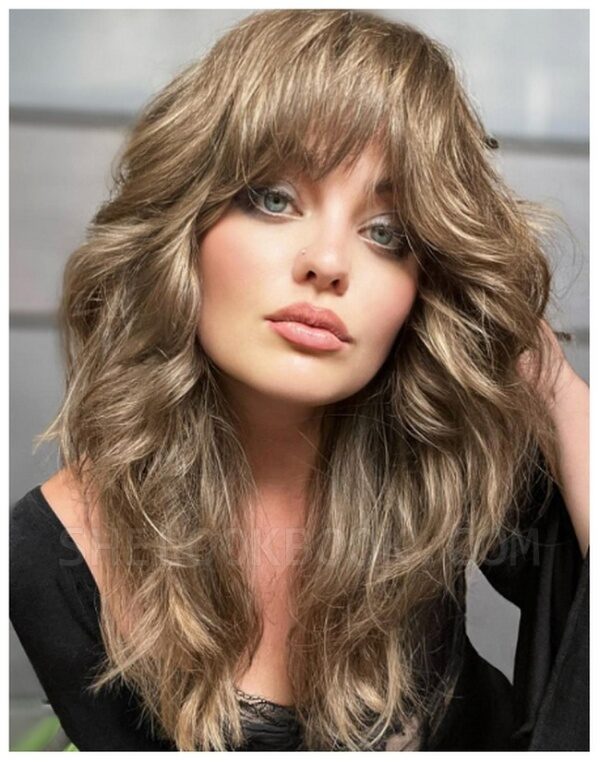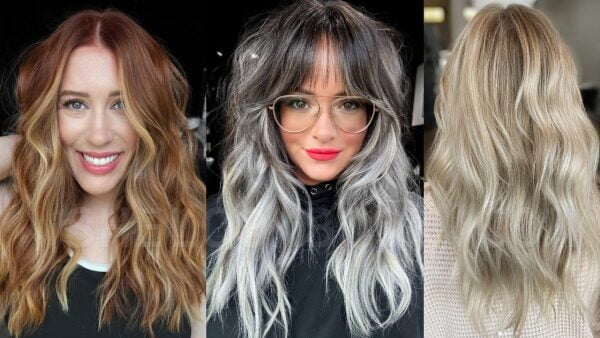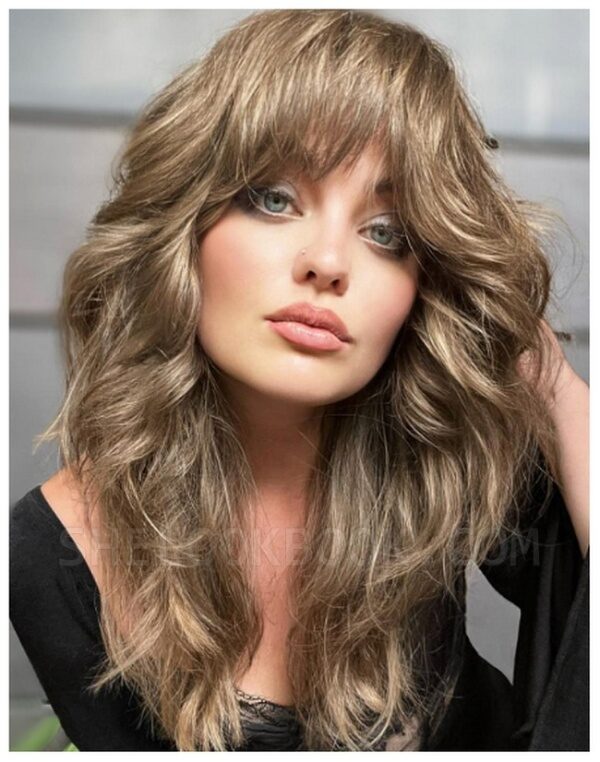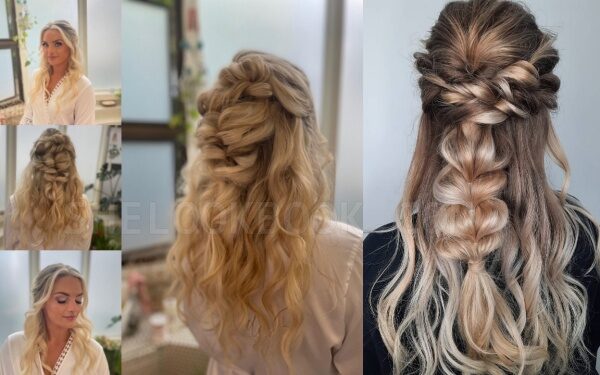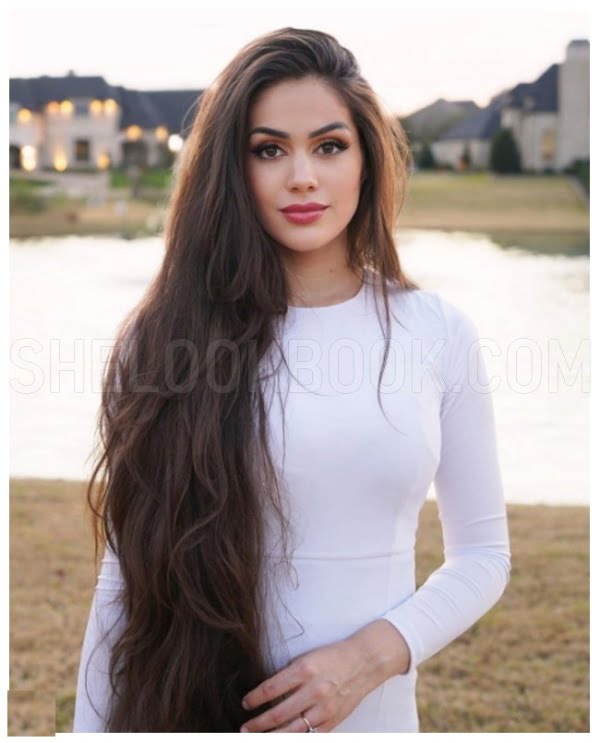Long hair has always been a symbol of beauty and femininity across times and cultures. However, maintaining long, healthy hair requires appropriate attention and care. The question that arises is: Why does long hair require special care?
The challenges of long hair
Hair lengths, especially when they extend past the shoulders, are subject to various stressors that can affect their health and appearance.
- Split ends: The ends of long hair are older and have suffered more external aggression (sun, pollution, heat from drying and straightening), which makes them more likely to split ends.
- Dryness: Natural oils produced by the scalp have difficulty reaching the ends, making long hair more prone to dryness.
- Breakage and friction: Long hair constantly rubs against clothing and other surfaces, which can cause breakage.
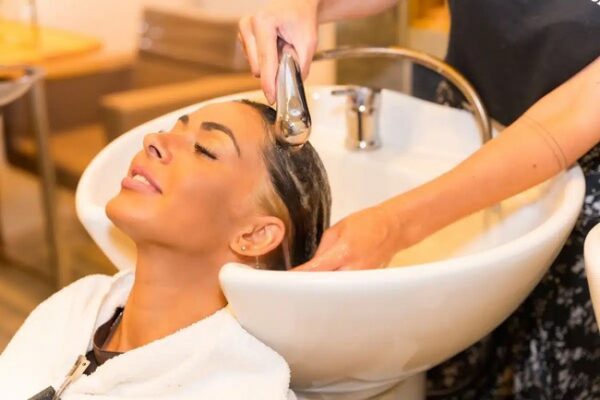
Care suitable for long hair
To prevent these problems and maintain healthy hair, special care is necessary.
| Specific care | Description |
|---|---|
| Nourishing masks | Regularly apply hair masks rich in nutrients such as keratin or castor oil to moisturize and strengthen the hair fiber. |
| Hair oils | Use natural oils to nourish and protect dry ends. |
| Regular fit | Remove split ends every 3 to 4 months to prevent them from moving up the hair shaft. |
| Thermal protection | Limit the use of heating appliances and always apply a heat protection product before styling. |
| Gentle detangling | Use a wide-toothed comb or soft brush to avoid breaking hair when detangling. |
Additional Tips for an Effective Hair Routine
In addition to specific treatments, integrating these practices into your daily routine will greatly contribute to the health of your hair:
- Reverse Wash: Applying conditioner before shampooing can help preserve moisture in the lengths.
- Dry Naturally: Allow your hair to dry naturally as much as possible to avoid heat damage.
- Night routine: Use a satin bonnet or silk pillowcase to reduce friction while sleeping.
- Balanced diet: A diet rich in omega-3, biotin, protein, iron, and vitamins is essential for hair health.
Taking care of your hair takes time and patience, but the result is worth it. By adopting a suitable hair routine and following these tips, you can maintain beautiful, strong, and healthy hair. Let’s remember that hair health starts from the inside; thus, a good diet and a healthy lifestyle are just as crucial as external care.
Understanding the enemies of shine and the causes of split ends
Hair, our invisible crown, often reflects the first impression we give to the world. Taking care of your hair is not only a question of aesthetics, but also of hair health. However, preventing split ends remains a shining challenge for many people. In this article, we will explore the main causes that harm the vitality of our hair and how to remedy them.
Heating devices: impact on hair health
Frequent use of heating appliances such as hair dryers, straighteners, or curling irons can significantly damage the hair fiber. Intense heat alters the hair scales, leading to a loss of shine and the appearance of dry, split ends.
- Tips to protect your hair:
- Always use a heat protector before applying heat.
- Limit protector devices to once or twice a week at most.
- Choose natural drying or use the hairdryer in cold mode.
Chemicals and coloring: effects on split ends and shine
Chemical treatments, including coloring, bleaching, and certain types of permanent straightening, can greatly weaken the hair structure. They break down the hair’s internal protein bonds ( keratin ) and deplete its natural moisture, making hair dry, brittle, and susceptible to split ends.
- Healthy alternatives for your hair:
- Opt for gentle colorings, without ammonia.
- Strengthen your hair routine with nourishing masks and oils (like castor oil) to deeply rehydrate.
- Reduce the frequency of chemical treatments and give your hair time to regenerate.
Environmental Factors Affecting Hair Fiber
External aggressions such as sun, wind, salt, or chlorine can erode the hair cuticle, causing loss of moisture, rough texture, and a dull appearance. In addition, extreme temperature variations between the heated interior and the cold exterior during the winter can increase this damage.
- Strategies for protecting against the elements:
- Use products containing UV filters when exposed to the sun.
- Cover your hair with a hat or scarf during prolonged exposure to the elements.
- After swimming in the sea or the pool, always rinse your hair with clean water.
In short, understanding the enemies of shine and split ends is essential to adopting a hair routine that not only promotes but also deeply nourishes our hair. By following these tips adapted to each type of attack, you will be able to maintain healthy, shiny, and strong hair.
Optimal hair routine for long hair
Takinoptimalof your long hair requires patience, regularity, and a good knowledge of suitable products and techniques. In this article, we guide you through an optimized hair routine to keep your hair healthy, protect it from external aggressions, and prevent split ends and breakage
Washing frequency and choice of nourishing shampoo
The first step towards dream hair is understanding the ideal washing frequency. Washing too frequently can dry out your hair, while washing too far apart can lead to product and oil buildup, making your hair heavy and dull. The optimal frequency varies by hair type, but washing every 2 to 3 days is generally recommended for long hair.
Choose a nourishing shampoo without sulfates or parabens. These components can be too aggressive for fragile hair fibers. Opt for formulas enriched with keratin, argan oil, or aloe vera to nourish the scalp and strengthen the hair fiber from the roots.
| Hair type | Recommended shampoo |
|---|---|
| Dry hair | Moisturizing shampoo with argan oil |
| Greasy hair | Clarifying shampoo with aloe vera |
| Mixed hair | Keratin Balancing Shampoo |
The importance of hydration and deep conditioning
Long hair is particularly susceptible to damage at the ends, which are older and have been exposed to the elements for longer. To combat dryness and elements fords, hydration is key. Use conditioner after every wash and a nourishing hair mask once a week. Ingredients such as castor oil, coconut oil, or shea butter are excellent for repairing and deeply hydrating.
An oil bath before shampooing can also be beneficial for very dry or damaged hair. Apply your favorite oil to your hair, leave it on for at least an hour, then wash as usual.
Natural drying techniques and thermal protection
Repeated exposure to heat from appliances such as hair dryers, straighteners, or curlers can seriously damage your hair. Favor natural drying when possible. If you must use a heat tool, remember to apply a heat protectant to the entire length of the hair to minimize damage.
- When blow-drying your hair, always use a diffuser and set it to the lowest temperature.
- Avoid rubbing your hair with a towel; squeeze them gently to remove excess water.
- Use a soft-bristled brush or wide-tooth comb to detangle your hair while it’s still damp to reduce breakage.
By incorporating these steps into your daily hair routine, you can help keep your long hair healthy, reduce future damage, and enjoy beautiful, shiny, silky hair.
Natural solutions to repair and protect long hair
Long hair requires special attention to stay healthy. Sometimes, external aggressions, excessive use of heating appliances, or even a poor hair routine can lead to damage such as dry ends or split ends. Fortunately, there are effective natural solutions to repair and protect your hair. Let’s find out together how.
Essential oils and homemade masks against dry ends
Dry ends are often the result of insufficient hydration. To remedy this, it is necessary to deeply nourish the hair fiber.
- Essential oils: castor oil, known for its strengthening properties, and argan oil, known for its moisturizing power, can be applied to the lengths and ends of the hair. They contribute to the repair of damaged hair and the prevention of split ends.
- Homemade masks: An egg yolk, olive oil, and honey mask can provide intense nutrition. These ingredients, rich in essential vitamins and minerals, help restore shine and softness to the hair.
| Ingredients | Benefits |
|---|---|
| Castor oil | Strengthens and promotes growth |
| Argan Oil | Moisturizes and protects |
| Egg yolk | Nourished with protein |
| Olive oil | It brings shine and softness |
| Honey | Hydrates and revitalizes |
Vitamins and a balanced diet for healthy hair

A nutrient-rich diet is fundamental to maintaining hair health from the inside out.
- Vitamins: Vitamins A, B, C, D, and E, as well as omega-3, are crucial for healthy hair. They not only help strengthen hair but also stimulate its growth. Foods such as salmon, avocados, nuts, and spinach are excellent sources of these nutrients.
- Hydration: Drinking enough water is essential to maintain hydration in the body, scalp, and hair.
- Proteins: Hair is primarily composed of keratin, a protein. Consuming protein-rich foods like chicken, tofu or lentils can help strengthen hair structure.
By adopting these natural solutions into your hair routine, you are significantly contributing to the health and beauty of your long hair. A holistic approach that combines appropriate external care and a balanced diet proves to be the key to obtaining radiant hair without resorting to harsh chemicals. Remember that routine and gentle care are essential to prevent damage and keep your hair in perfect health.
Tips for preventing split ends without sacrificing length
Split ends are a real nightmare for those who aspire to long, healthy hair. They often result from improper care, excessive use of heating tools, or simply the fragile nature of certain hair types. Fortunately, there are methods to preserve length while preventing those unwanted ends from appearing. Here are some proven strategies.
Regular cutting of ends: frequency and technique
Regular trimming of the ends is crucial to maintaining healthy hair. Although the idea may seem counterintuitive for those looking to gain length, this practice helps eliminate split ends before they spread down the length of the hair.
- Recommended frequency: Ideally, having the ends cut every 3 to 4 months is a good rhythm to prevent the appearance of split ends without significantly affecting hair growth.
- Technique: Ask your hairdresser for a dry cut, which allows you to better identify split ends and to only cut what is strictly necessary.
No-Pull Protective Hairstyles and Accessories
Hairstyles that are too tight and unsuitable accessories can cause friction and breakage, making split ends worse. Opting for protective hairstyles and using accessories designed to minimize pulling can go a long way toward protecting your hair.
Recommended hairstyles:
- Loose braids
- Low buns
- Low ponytails
Accessories to favor:
| Accessory | Characteristic |
| ———————————- | —————————— |
| Fabric covered elastics | Minimizes breakage |
| Metal-free barrettes | Prevents Snags |
| Soft headbands | Avoid excessive traction |
In summary, maintaining a healthy hair routine, including regular trims and using the right techniques and accessories, is essential to avoiding split ends and promoting healthy growth of your hair. Remember that the choice of hair products ( without sulfates and parabens ) and a diet rich in vitamins and minerals also play a crucial role in preserving the health of your hair. With patience and regularity, it is entirely possible to effectively prevent the appearance of split ends, while maintaining or even increasing the length of your hair.
Maximizing the shine of long hair: professional secrets
Long hair can be a real beauty asset, but it requires special attention and care to maintain its shine and health. Discover the professional secrets to maximizing the shine of your hair.
Hair serums and shine sprays: when and how to use them
Hair serums and shine sprays are valuable allies for enhancing long hair. Here’s how to use them effectively:
- When to use: Apply these products to clean, slightly damp hair, or as a finishing touch to dry hair to control frizz and add shine.
- How to use :
- For the serum, place a few drops in your hands, rub them together, and then gently pass over the lengths and ends. Avoid the roots so as not to grease the scalp.
- For the spray, hold it at a distance of about 30 cm from your hair and spray lightly. This will allow for more even distribution without weighing down the hair.
Recommended products: Opt for serums enriched with vitamins, argan oil, or keratin. Prefer alcohol-free sprays to avoid drying out.
Brushing Techniques to Boost Natural Shine
Proper brushing can not only detangle your hair but also improve its shine by naturally distributing hair oils. Follow these tips:
- Choice of brush: Use a boar bristle brush. Natural bristles are excellent for massaging the scalp and evenly distributing sebum along the entire length of the hair.
- Brushing technique:
- Start by detangling the ends, then gradually work your way up to the roots. This minimizes breakage and prevents split ends.
- Brush your hair twice a day, morning and evening, to stimulate blood circulation to the scalp and promote the overall health of your hair.
Summary table of actions to adopt:
| Actions to adopt | Explanations |
|---|---|
| Moderate use of serum | Apply sparingly to avoid the greasy effect |
| Spraying the spray | Remote for light coverage |
| Choice of brush | Boar hair for a natural effect |
| Brushing technique | Tips towards the roots to minimize breakage |
By integrating these practices into your daily hair routine, you will not only help strengthen the health of your hair but also reveal its natural shine. Regular maintenance, combined with the judicious use of suitable products, is the key to obtaining vibrant, healthy hair.
Adaptation of treatments according to hair type: fine, curly, frizzy
Each type of hair has its specificities and requires special attention to reveal all its shine. Whether you have fine, curly, frizzy, or colored hair, find out how to adapt your routine for healthy hair.
Specific care for fine hair: volume without weighing it down
Fine hair often suffers from a lack of volume and can easily become weighed down with products that are too rich. To meet their need for lightness while providing body and volume:
- Use a sulfate-free volumizing shampoo to gently cleanse without drying.
- Apply a light conditioner only to the ends to avoid overloading the roots.
- Opt for light hair masks once or twice a week.
- Favor natural drying or blow-drying with a round brush to lift the roots.
| Tips | Description |
|---|---|
| Regular fit | Maintains healthy ends and adds volume. |
| Texturizing products | Add body without adding weight. |
| Raised roots | Use tongs when drying for more volume at the roots. |
Intensive moisturizing routine for curly or frizzy hair
Curly and frizzy hair tends to be drier and requires deep hydration. Here’s how to pamper them:
- Moisturize daily with light oils like argan or jojoba oil.
- Use a moisturizing mask rich in shea butter or aloe vera at least once a week.
- Adopt protective hairstyles (braids, buns) to minimize breakage.
- Avoid excessive heat (hair dryer, straightener) and favor drying in the open air.
| Advice | Importance |
|---|---|
| Gentle detangling | Preserves curl shape and minimizes breakage. |
| Oil bath | Deeply nourish before washing. |
| Night protection | satinonnet or silk pillowcase to reduce friction. |
Maintenance strategies to preserve the color of colored hair
Colored hair requires special attention to maintain its shine and health:
- Choose products formulated specifically for colored hair, without sulfates or parabens.
- Incorporate a deep conditioner into your weekly routine to restore moisture and shine.
- Protect hair before using heating appliances with a dedicated product.
- Rinse hair with cold water to seal scales and maintain bright color.
| Precautions | Effects |
|---|---|
| Washing frequency | Limit to 2-3 times per week to prevent washing out. |
| Nourishing masks | Preserve the color intensity and softness of the hair. |
| Filtered water | Avoid limescale deposits, which dull the color. |
By adapting your hair routine to your hair type and its specific needs, you will contribute to its long-term health and beauty. Remember that patience and regularity are key to maintaining your hair.
Long-term care planning for luscious hair
The pursuit of healthy, luscious hair is a journey that requires patience, knowledge, and dedication. In this article, we’ll explore proven strategies for optimizing your hair growth cycle while incorporating natural therapies and reducing stress to help you maintain vibrant hair for the long term.
Regular assessment of hair health: signs of wear to watch for
Regular assessment of the condition of your hair is crucial to preventing and treating signs of wear. Key indicators to watch include:
- Split and brittle ends: are often caused by chemical damage, excessive use of heating devices, or rough handling.
- Dry, dull hair: may indicate a lack of hydration or nutrition.
- Irritated or flaky scalp: potential sign of scalp imbalances requiring special attention.
Using suitable products, such as nourishing shampoos, hydrating hair masks, and hair oils, can help repair and protect the hair fiber.
Incorporation of natural therapies and stress reduction
Incorporating natural therapies into your hair routine can greatly influence the overall health of your hair. Here are some suggestions:
- Weekly oil baths with castor oil or sweet almond oil to nourish and strengthen the lengths.
- Use aloe vera to moisturize and soothe the scalp.
- Adoption of a balanced diet rich in omega-3, biotin, iron, proteins, and antioxidants to support hair growth.
At the same time, reducing stress through practices such as yoga, meditation or regular physical activities plays a significant role in maintaining hair health.
Optimization of the hair growth cycle with a suitable routine
To promote an optimal growth cycle, it is essential to establish a hair routine adapted to your hair type . This includes:
- The choice of products without sulfates or parabens, adapted to your hair type (fine, curly, or frizzy),.
- Limiting the use of heating appliances and protecting hair when they are used.
- Adopting protective hairstyles to minimize friction and breakage.
- Regular cutting of the ends to prevent split ends.
| Advice | Description |
|---|---|
| Hydration | Use nourishing masks regularly and apply a leave-in treatment after each wash. |
| Protection | Before using a heating device, always apply a product that provides thermal protection. |
| Candy | Favor gentle detangling with a wide-toothed comb on damp hair. |
In conclusion, a holistic approach combining regular assessment, the integration of natural therapies, a healthy diet, and a meticulously chosen hair routine is essential to cultivating and maintaining luscious hair over the long term. Remember that patience and consistency are your best allies on this journey to optimal hair health.
